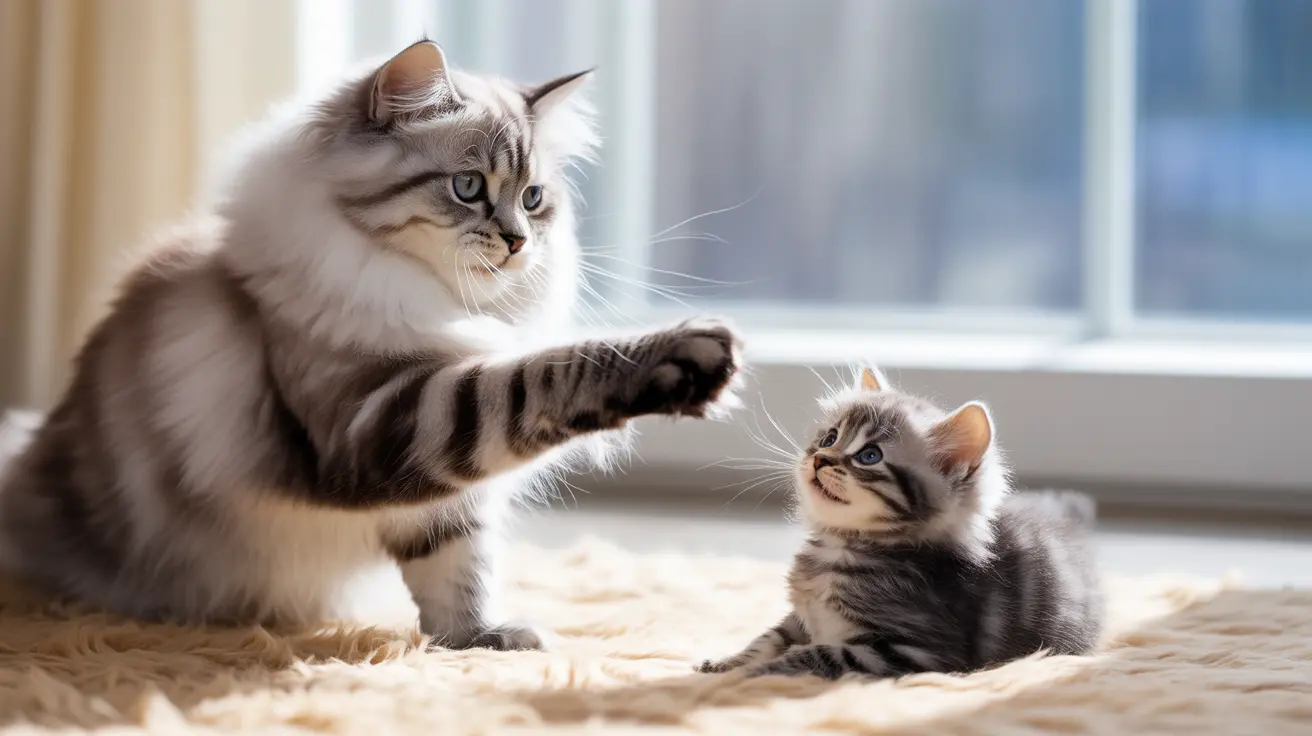Understanding Why Older Cats Play Rough
Older cats may display rough play behaviors with kittens for several natural reasons. Many of these behaviors stem from instinctual teaching mechanisms that help kittens learn important social and survival skills.
The primary motivations often include:
- Teaching hunting and defensive skills
- Establishing social hierarchies
- Expressing pent-up energy
- Testing boundaries and social dynamics
Natural Teaching Behaviors
Adult cats instinctively use play to teach younger cats vital life skills. This includes mock hunting, defensive moves, and social boundaries. While it may look aggressive to humans, this type of interaction is often an important part of kitten development.
Signs of Normal vs. Problematic Play
Understanding the difference between healthy rough play and concerning aggression is crucial for maintaining a safe environment for both cats.
Normal Play Indicators:
- Both cats taking turns being pursuer and pursued
- Periods of rest between play sessions
- No signs of fear or distress
- Retracted claws during most interactions
- Quiet or playful vocalizations
Warning Signs of Excessive Aggression:
- Constant pursuit of the kitten
- Loud hissing or growling
- Fully extended claws during interactions
- Kitten showing fear or hiding frequently
- Actual biting that breaks skin
Managing Rough Play Effectively
When older cats play too roughly with kittens, several management strategies can help create more appropriate interactions:
Immediate Interventions:
- Redirect aggressive play with toys
- Separate cats when play becomes too intense
- Provide escape routes and high places for the kitten
- Use positive reinforcement for gentle behavior
Long-term Solutions:
- Regular interactive play sessions with both cats
- Multiple resource stations throughout the home
- Gradual, supervised introduction periods
- Consistent daily routines
Frequently Asked Questions
Why does my older cat play rough with my new kitten?
Older cats play rough with kittens to teach them social skills, hunting techniques, and establish hierarchy. This behavior is often normal and serves as a teaching mechanism, though it should be monitored to ensure it doesn't become too aggressive.
How can I tell if my older cat's rough play with the kitten is normal or too aggressive?
Normal play involves taking turns, no injuries, and willing participation from both cats. If your kitten shows fear, tries to escape constantly, or gets injured, the play has become too aggressive and requires intervention.
What are effective ways to stop my older cat from playing too roughly with my kitten?
Redirect rough play with toys, provide separate play sessions for each cat, create safe spaces for the kitten, and interrupt aggressive interactions with a loud noise or clap. Never physically punish either cat.
How should I introduce a kitten to an older cat to reduce roughplay and fighting?
Use a gradual introduction process, starting with separate spaces and scent exchange. Progress to supervised visual contact through a barrier before allowing direct interaction, always monitoring their behavior closely.
Can rough play between an older cat and kitten cause long-term behavioral problems?
Yes, if left unmanaged, excessive rough play can lead to anxiety, fear, and aggressive behaviors in both cats. Early intervention and proper socialization are key to preventing long-term issues.
Conclusion
While it's natural for older cats to play rough with kittens, maintaining a balance between educational play and excessive aggression is crucial. By understanding normal feline behavior, recognizing warning signs, and implementing appropriate management strategies, you can help foster a healthy relationship between your cats that will last a lifetime.






